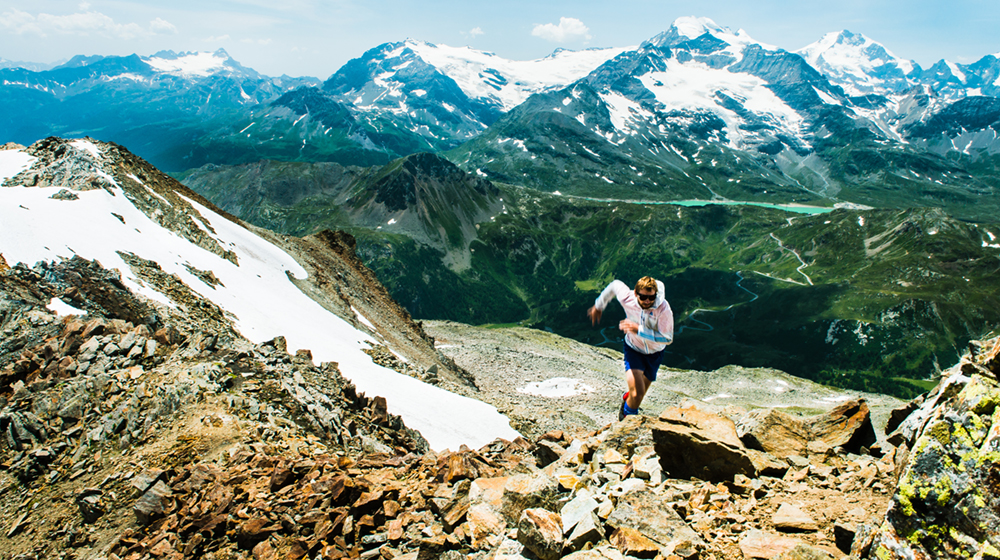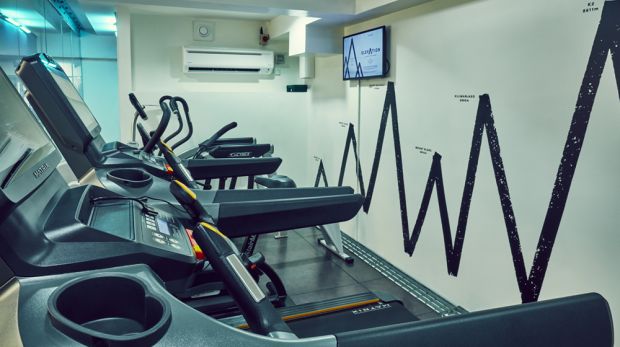Altitude Training: The Lung-Busting Challenge of Hypoxic Chambers
Coach heads for new heights in Third Space Soho’s hypoxic chamber

Anyone who has ever spent time at high altitude will know that the fantastic views come with a price. The thin air will have you gasping in no time at all, and any kind of activity at altitude becomes far harder. That might make you think it’s best to avoid over-exerting yourself when miles above sea level, but there are actually a host of advantages to training in a hypoxic chamber.
Why Try Altitude Training?
Spending even 15 minutes working out at great heights is not easy, so you’ll want plenty of bang for your buck in terms of fitness benefits. Coach asked Bobby Rich, personal trainer at luxury health club Third Space, what ordinary people could expect from a couple of sessions a week in a chamber that simulates the effects of high altitude on the human body.
“One of the largest benefits from using a hypoxic chamber is the increase of red blood cells, which allows for more oxygen and nutrients to be carried in the blood straight to your muscles.
“For a professional athlete this allows them to work at a higher intensity, thereby increasing their aerobic capacity. The red blood cells also carry away waste quicker, allowing the athlete to have a higher lactate threshold and to recover faster. This is still a huge benefit for ordinary folks. Due to that increase of red blood cells, you will benefit from an improved immune system, improved blood circulation and decreased blood pressure [if high].”
Coach tried out altitude training in the rarefied air of Third Space Soho’s hypoxic chamber, taking on its “Elevation Challenge”. This consisted of a 1,000m row, a 50cal assault bike, a 1,000m run with three per cent incline, and 10 burpees – all done as quickly as possible.

It is ridiculous how much harder everything becomes once some extra height is added to the equation. Coach managed most of the row, but by the time the absurdly difficult assault bike ride was finished, everything was hurting to the point that the 1,000m run took two-and-a-half minutes longer than it would normally.
You don’t need to go all out and do a similar challenge, but you can be sure that moving any kind of workout up to mountain height will make it twice as hard in half the time.
Get the Coach Newsletter
Sign up for workout ideas, training advice, reviews of the latest gear and more.
Where to Try Altitude Training in London
Third Space, Soho
Members at the Soho branch of Third Space can “enjoy” training in the on-site hypoxic chamber, and take on the Elevation Challenge where you can win six months’ complimentary membership. From £150 monthly, 67 Brewer Street, W1F, thirdspace.london
The Altitude Centre
For one-off classes and solo workouts at altitude, head to The Altitude Centre, which hosts spinning and running sessions. From £29, Trump Street, EC2V, altitudecentre.com
How High is Too High? The Effects Of Altitude On The Body
Coach explores altitude training in a gym's hypoxic chamber. Altitude training helps increase red blood cells, which allows for more oxygen and nutrients to be delivered to your muscles.
Training at altitude was once reserved for the top 1%, the elite, affluent sportsmen and women chasing performance perfection at alpine boot camps or in high-tech sports labs. It’s now more accessible, with centres across the country – recently including Virgin Active’s London Walbrook club – bringing the mountain conditions to the masses via hypoxic chambers, with claims that they’re as useful for helping shift stubborn belly fat as they are for shaving milliseconds off your triathlon time. Here we break down how training at escalating altitudes affects the human body.
0m – sea level
The human body can perform best at sea level where the atmospheric pressure and concentration of oxygen in the air (20.9%) saturates haemoglobin, the oxygen-binding red pigment in red blood cells.
1,344m – highest altitude in UK (Ben Nevis)
With less oxygen available, you get out of breath easier and lactic acid builds up in your muscles quicker. Above 1,830m the body exhales and perspires twice as much moisture as at sea level, meaning you get dehydrated quicker.
3,000m – hypoxic chamber (Virgin Active)
3,000m – hypoxic chamber (Virgin Active)
After 2,100m the saturation of oxyhaemoglobin begins to plummet. To make up for the drop in oxygen, your heart rate and breathing rate has to increase to supply it to your muscles and expel carbon dioxide.
4,810m – highest altitude in Alps (Mont Blanc)
Pulmonary artery pressure increases in an effort to oxygenate the blood. Blood flow is prioritised to supply the brain, heart and lungs. With more blood being pumped through the arteries to the brain, headaches are common.
5,888m – highest altitude in Mount Kilimanjaro
Exposure for very short bouts in a hypoxic chamber conditions your body for altitude pre-mountain trip and helps improve your body's ability to use oxygen for exercise, but prolongued exposure can be problematic. Non-essential bodily functions are suppressed, resulting in a decline in food digestion efficiency. Lack of blood flow to the digestive organs can cause nausea, vomiting and loss of appetite.
Piers Chen, Performance Specialist at The Altitude Centre says, “The summit of Kilimanjaro is approximately 5,888m. At 10% oxygen, you don’t want to spend much time at this level. Symptoms of this level of altitude include sleepiness, slowing of cognitive functioning, headaches and nausea. The air is so thin, each steps feels like a massive effort. Even taking a sip of water leaves you gasping for air.”
There's no chance of any adverse effects at the Altitude Centre, though. Visitors only spend a maximum of five minutes in 5,888m conditions for the final part of their passive acclimatisation (spending time at simulated altitudes, but not exercising), and they must be sitting down. “We've never had anyone pass out or vomit, and long may that last!” says spokesperson Lex Rees.
8,848m – highest altitude in the world (Everest)
Mountaineers refer to altitudes above 8,000m as the “death zone”, where no human body can acclimatise because the oxygen is too low to support life. Sleeping becomes very difficult, digesting food is near-impossible and the risk of death from fluid in the lungs and swelling of the brain increases greatly.

Nick Harris-Fry is a journalist who has been covering health and fitness since 2015. Nick is an avid runner, covering 70-110km a week, which gives him ample opportunity to test a wide range of running shoes and running gear. He is also the chief tester for fitness trackers and running watches, treadmills and exercise bikes, and workout headphones.
